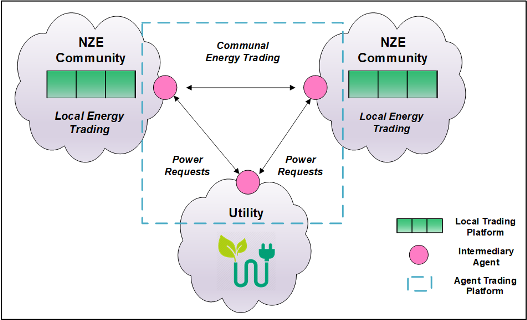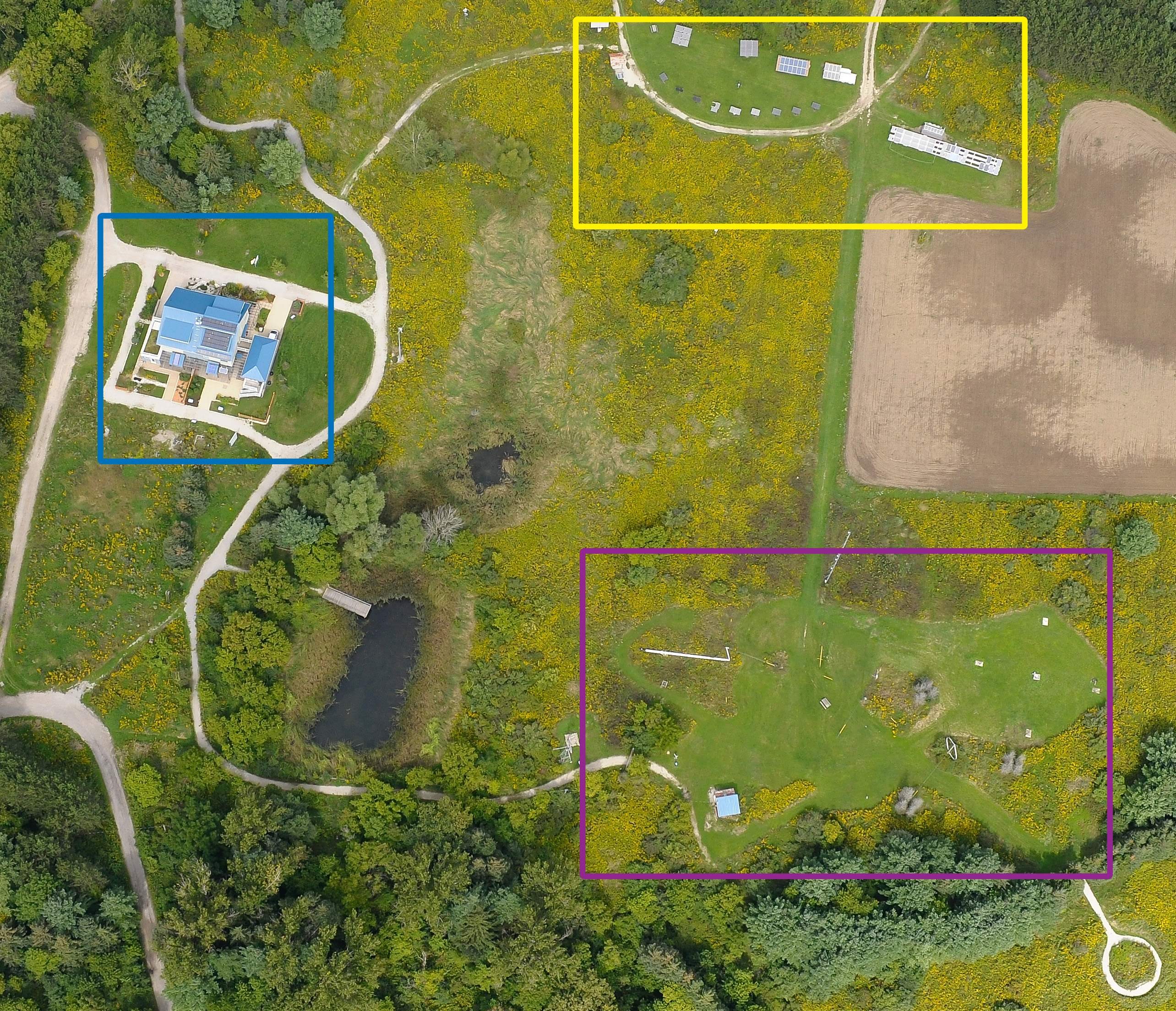Transactional Energy’s Role in Addressing Climate Change
Courtesy of Aidan Brookson

In a Transactional Energy Framework (TEF), energy producers can be directly linked to neighbouring energy consumers
The energy landscape around the world is rapidly changing. Every year, advances in technologies such as solar photovoltaics or battery storage are helping to make clean energy solutions cost-competitive alternatives to traditional fossil fuel-based electricity generation.
However, integrating these renewable energy resources into existing electricity grids can be a challenge. Not only are they inherently intermittent, but they are often installed in a “distributed” nature. Traditionally, electricity generation capacity is installed in relatively large centralized generation facilities. Centralized generation allows for control from a relatively small number of locations, which is typically easier to manage. However, an outage at just a single centralized facility can have widespread impact. Conversely, distributed energy resources can be a challenge to manage, but help build towards a far more resilient electricity grid, that is less prone to widespread outages.
Transactional Energy is intended to help address these issues, helping to facilitate the adoption of more renewable, distributed energy resources and dynamically responding to changing conditions, thereby producing a cleaner and more resilient electricity grid. Transactive Energy is a communication and control mechanism that helps to improve grid efficiency and resiliency by dynamically coordinating the interactions between large numbers of grid-connected entities.

Photovoltaic Field Test Site producing clean energy for “Living Labs” at Kortright Centre for Conservation

Aerial view of STEP’s deployment of transactional energy at TRCA’s “Living Labs” at Kortright Centre for Conservation in Vaughan, ON
The term “Transactional” comes from the fact that this system uses economic signals and incentives to control vast numbers of energy resources, opening up the electricity market to large and small players. In a Transactional Energy system, energy producers are in direct communication with neighbouring energy consumers, allowing producers to sell/transfer energy to local consumers via, for example, a credit based system. Participants know exactly where the power within their system is coming from at any given time, and the core peer-to-peer principles promote active engagement of players within the system.
For example, if solar generation increases on a sunny day, a Transactional Energy system would see the overall price of electricity drop due to an increase in supply, incentivizing increased consumption of clean electricity. Conversely, high demand will increase the price of electricity, acting as a disincentive for consumption in order to reduce strain on the grid. A Transactional Energy system would manage these types of economic signal changes dynamically, allowing electricity systems to rapidly respond to changing conditions.
Fighting climate change requires two main strategies. “Mitigation” refers to the act of reducing or eliminating emissions in order to slow the rate that climate change worsens. “Adaptation” addresses the fact that some of the impacts of climate change are unavoidable or already upon us, and focuses on solutions that allow us to adjust to changing climate.
While climate change is a vastly complex phenomenon that cannot be solved by a single solution, Transactional Energy systems have a key role to play on both sides of the equation. Over the coming years, the energy sector must support the adoption of clean energy resources, as well as adapt to handle a higher frequency of events such as extreme weather that can produce more grid outage.
To learn more about STEP’s work on “Transactional Energy” – Click Here
